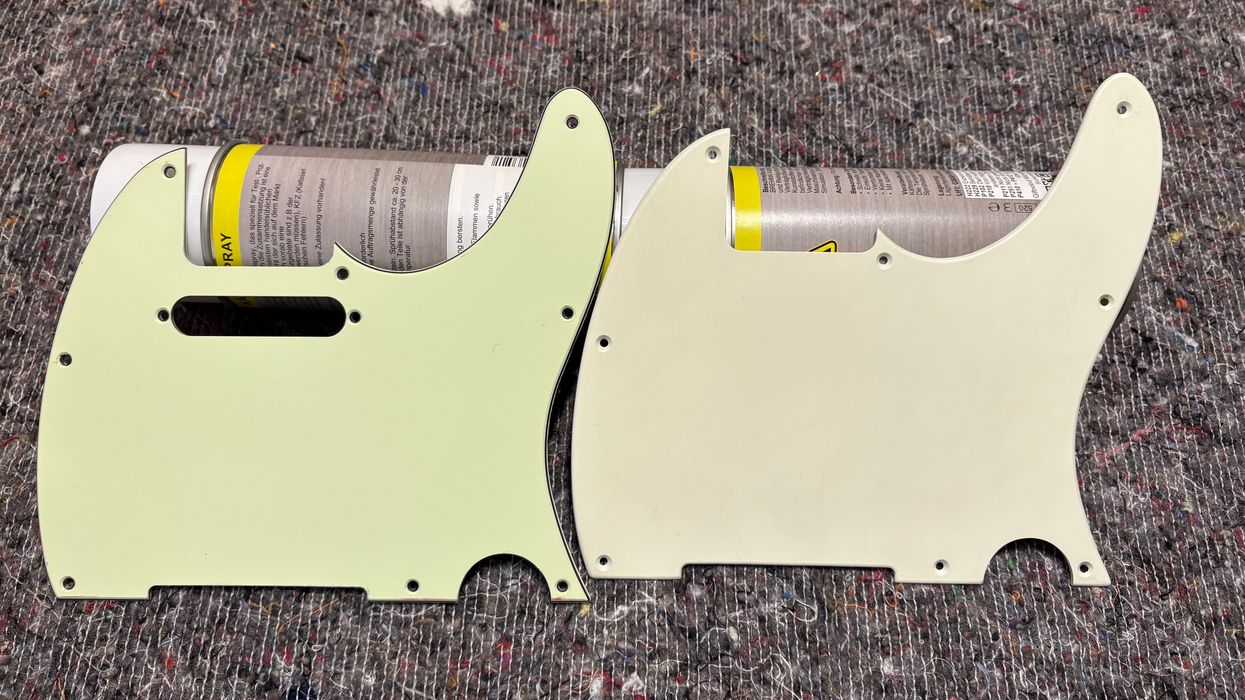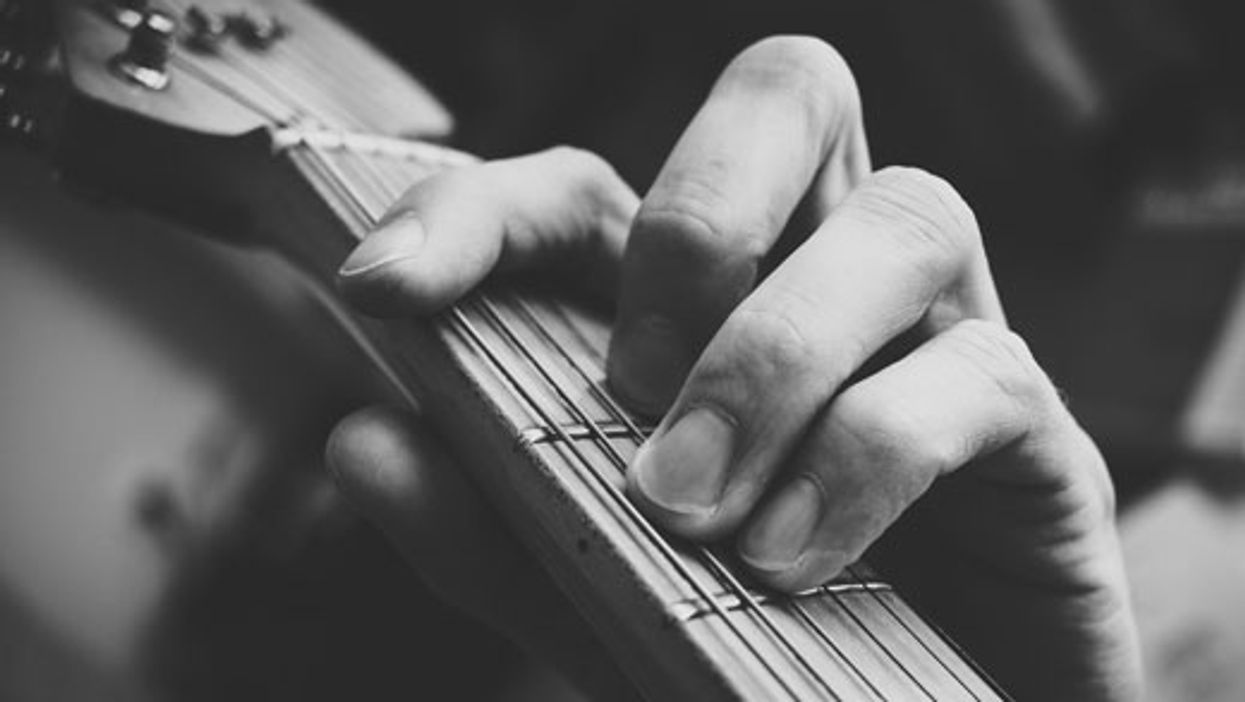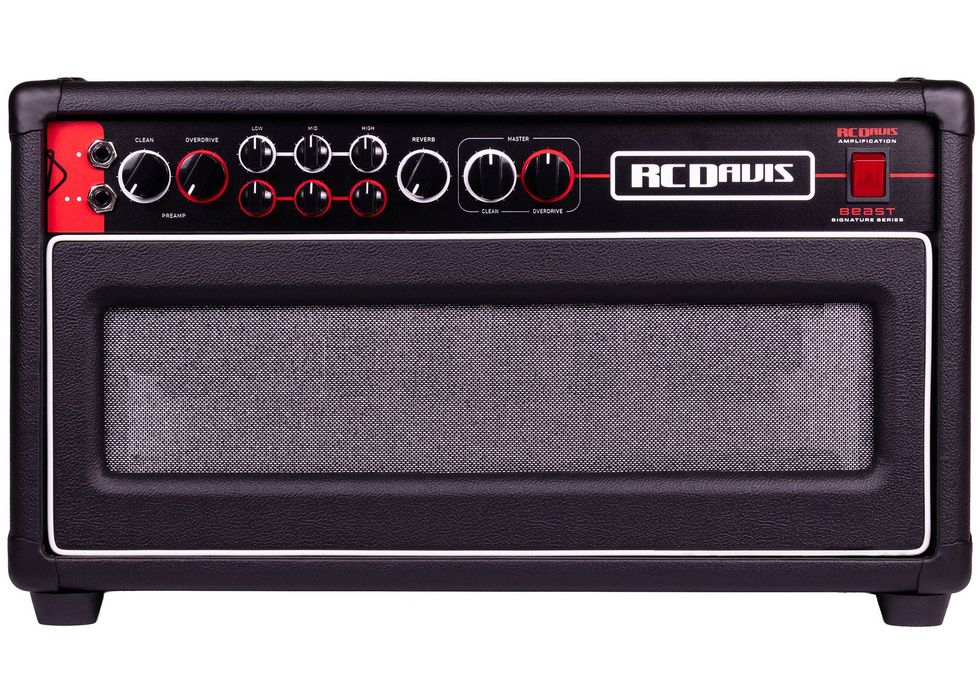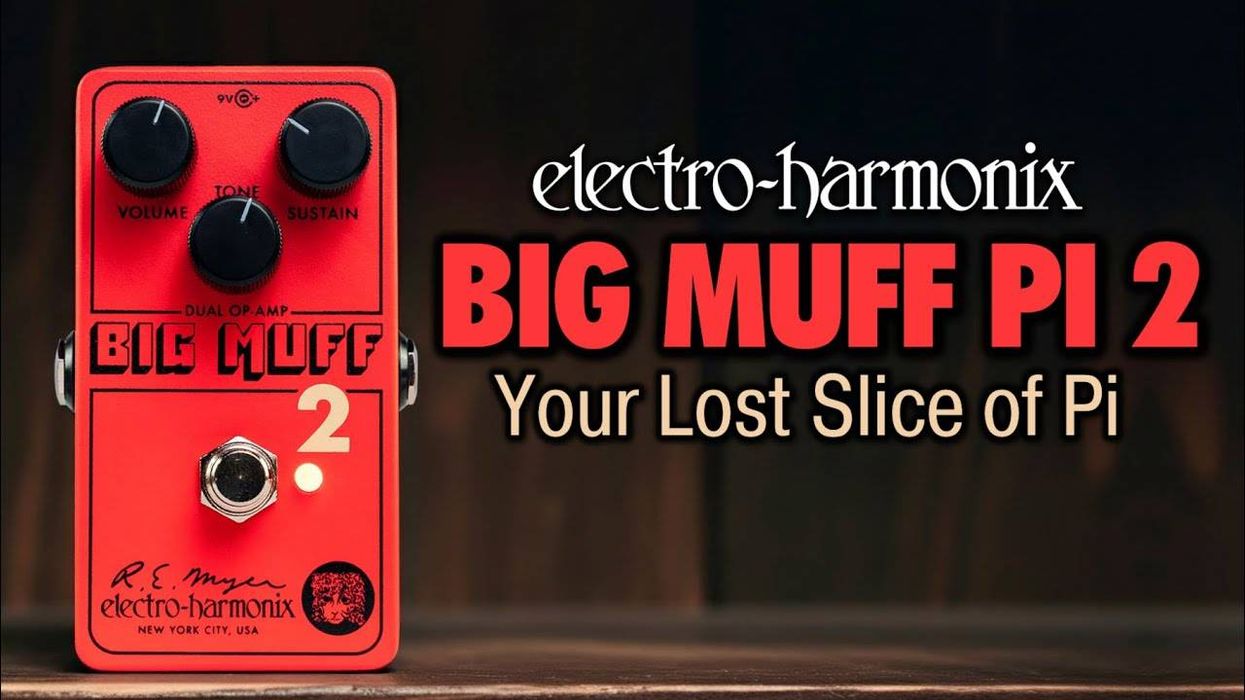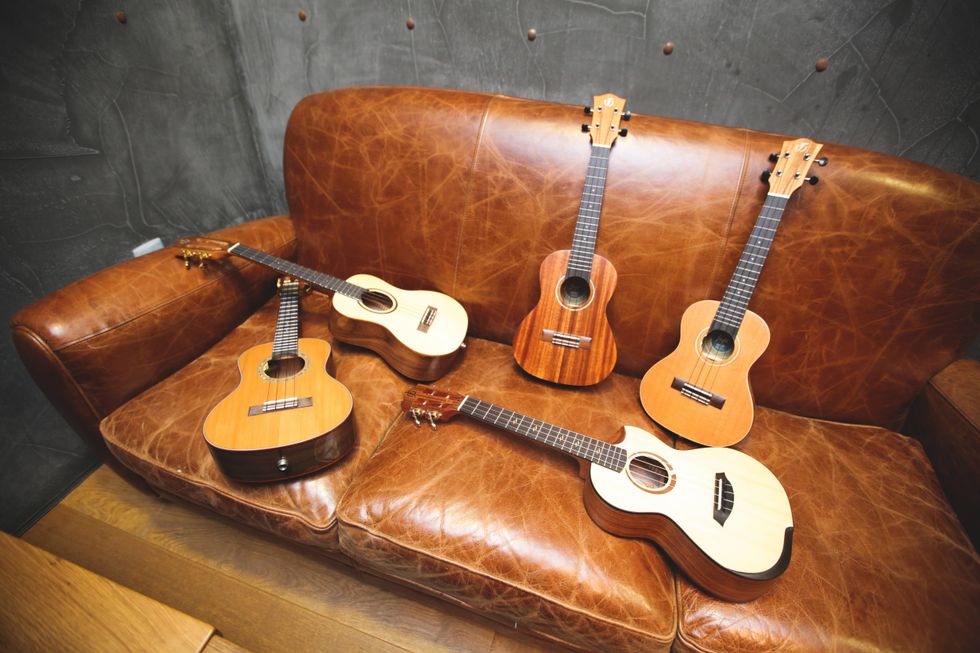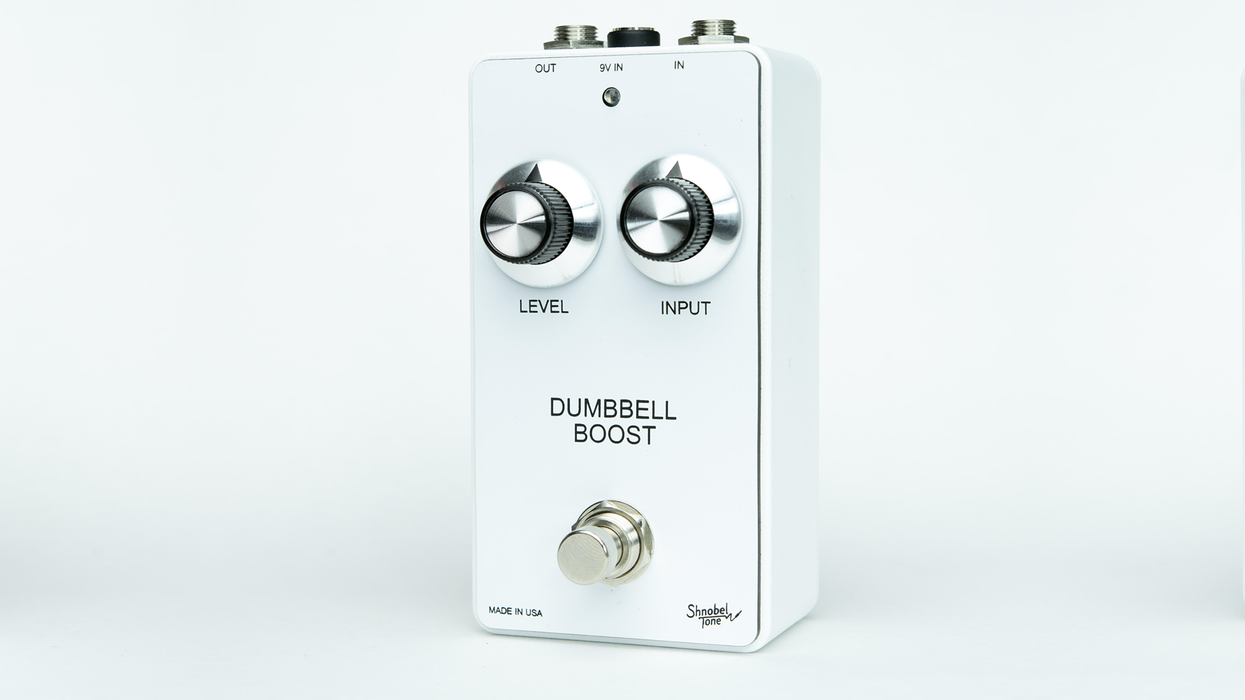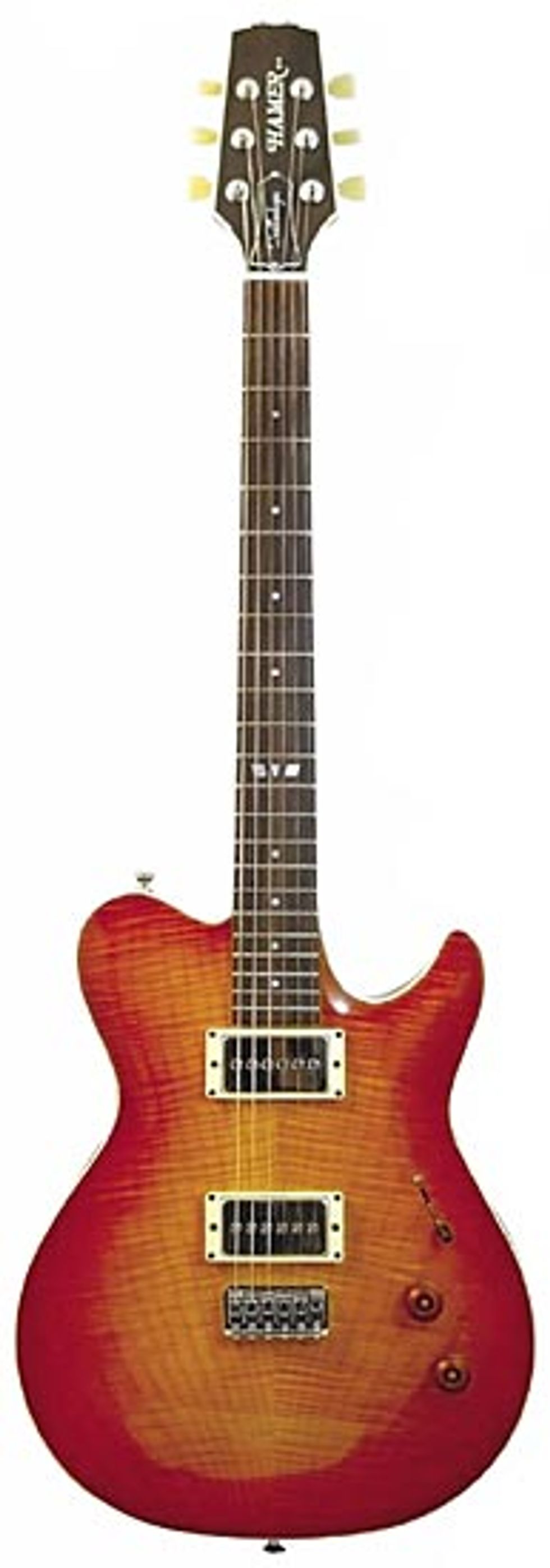 This review of the Hamer Talladega has ended up being rather difficult to write – certainly more difficult than expected. After all, I have been a fan of Hamer guitars since seeing bands like the Pretenders, Cheap Trick and Rockpile brandishing their early creations back when I was a little punk in junior high. There’s also the fact that they single-handedly created the whole concept of “boutique” instruments, without which our fair magazine would have very little to write about. Plus, the company originated in the Midwest, as did I, so that’s got to count for something, right?
This review of the Hamer Talladega has ended up being rather difficult to write – certainly more difficult than expected. After all, I have been a fan of Hamer guitars since seeing bands like the Pretenders, Cheap Trick and Rockpile brandishing their early creations back when I was a little punk in junior high. There’s also the fact that they single-handedly created the whole concept of “boutique” instruments, without which our fair magazine would have very little to write about. Plus, the company originated in the Midwest, as did I, so that’s got to count for something, right? So what’s the big hang up with writing about the Talladega? After all, it has been given the same lavish, nearly obsessive attention to detail afforded their entire U.S. lineup and the same Zen-like level of craftsmanship for which Hamer is renowned. It features the same Hamer-centric construction methods that start with the best from Fullerton and Kalamazoo and end with solutions to those designs’ shortcomings. It follows Hamer’s long-standing tradition of innovation within the familiar constraints of time-tested designs.
It could just be the guitar’s moniker. The truth is I enjoy mindless comedies as much as anything by Stanley Kubrick or Mike Leigh, so maybe it’s the mental name check of the so-stupid-it’s-genius Will Farrell film Talladega Nights that’s been hanging me up. Maybe if they’d have named the guitar the “Nürburgring” or “Monaco,” – wait, they do have a guitar named Monaco, but you get what I mean. It’s not like I have anything against NASCAR, but the Talladega seems capable of so much more than just turning left before gunning it.
The Race is On
The Talladega melds two fairly disparate schools of design into a viable instrument for both the Gibson and Fender faithful, although this effort seems to have ultimately landed closer to Fenderville’s city limits than many of Hamer’s more typically McCarty-inspired works.
From the maple neck’s “56 V” profile and 25.5” scale length to its familiar body shape, the Talladega wears its Telecaster influences on its sleeve. Where things start taking a turn toward Kalamazoo, Michigan circa 1956, or, more appropriately, Wilmette, Illinois some 20 years later, is in the guitar''s set-neck construction and decidedly non- Fender-like choice of tone woods, using a chambered Honduran mahogany body with a beautiful, hand-carved, flame maple top. In fact, opening the case and catching sight of the Talladega''s tightly patterned, Italian ivoroid-bound top will quickly obliterate any lingering images of Ricky Bobby running around in his helmet and tighty-whities screaming "Help me, Tom Cruise!"
Under the Hood
The Talladega also features a self-referential tip of the hat with the inclusion of the Sustain Block bridge, which combines Fender-like string tension with quick response to right hand cues. This guitar further asserts its identity via the Seymour Duncan custom-wound, humbucker-sized P-90s. As part of an ongoing collaboration between the two companies, the pickup''s sonic objective was to cross Roy Buchanan''s fat, squeally bridge pickup from Nancy with more traditional P-90 flavors, with just a pinch of James Burton''s signature Tele-cluck thrown in.
In a video featuring Jol Dantzig, Seymour Duncan and Evan Skopp (available at hamerguitars.com) Seymour and company achieved this goal by using oversized Alnico magnet pole-pieces on the rear pickup while using the more traditional steel-slugs-witha- bar-magnet design at the neck, scatterwinding both. The end result is impressive, with the bridge pickup, aided by the stringthrough bridge, delivering a nice mix of P-90 grit with fat, Nashville approved Tele spank.
The custom wound "Double-D," or Duncan and Dantzig, pickups also feature a unique and surprisingly flexible 4-position switching scheme: all the way back is the bridge pickup, next is neck and bridge in parallel, then the neck pickup alone and finally the neck and bridge in series. The end result is an u?ber-flexible setup that is able to cover much more sonic territory than typically afforded using traditional dual-pickup wiring. In addition to the bridge pickup''s raucous Tele-inspired tones, using the bridge and neck in parallel gives up a nice, bell-like vibe not dissimilar to Roy Nichols'' work with the Strangers, albeit with additional beef. Both pickups in series serve up a healthy dose of fatty, greasy goodness, while the neck pickup on its own offers thick, stringy sounds with plenty of grit - think Hubert Sumlin with the Wolf.
Hamer shipped the Talladega with a straight neck sporting .003" relief measured at the eighth fret, and the action slammed down to 3/64" on the bass side and 2/64" treble, measured at the 17th fret. The action was almost too low for this ham-fisted picker, but never once buzzed or fretted out anywhere along the guitar''s quarter-sawn rosewood fingerboard. Other niceties included a flawlessly executed nut and intonation set correctly from the factory.
Visually, the Talladega is stunning, becoming more than just the sum of its parts and quickly asserting its own identity moments after picking it up and playing. Design-wise, the guitar is a cohesive shout-out to many different instruments, both lauded and overlooked, from the 12th fret inlay and peghead shape that oddly recall Epiphone''s glory days to the mid ''50s Fender V-shape neck profile, and finally the headstock binding and Tone Pros "Kluson" tuners that bring to mind vintage Gibson.
Play it for five minutes though, and it simply becomes the Talladega - and that, despite all of the effort and foresight that goes into the design and production of an instrument, is what ultimately matters most. To that end, the Talladega is amazing, offering up a new yet recognizable sonic palette that players from many different backgrounds will find both useful and familiar. Noted Tele-wrangler Greg V said the following about his Talladega, "I''ve been using the Talladega a lot lately and love it. Its comfortable, vintage-feeling neck shape and a cool tonal variety, wrapped up in a sleek, artful design, inspires me to feel and play."
The Final Mojo
"Feel and play" could easily become the Talladega''s maxim, due in no small part to its almost visceral appeal, practically begging to be picked up and played to see what kind of sounds it has to offer, as opposed to ending up a repository for tired, old standby licks. The combination of new and old inherent in the Talladega''s composition brings something fresh to the table that will offer inspiration to almost any player.
| Rating... | ||
| Tone... | ||
| Craftsmanship... | ||
| Features... | ||
| Value... | ||
| Overall... | ||
Hamer
$3800
hamerguitars.com
Our expert has stated his case, now we want to hear yours. Log on and share your comments and ratings.


